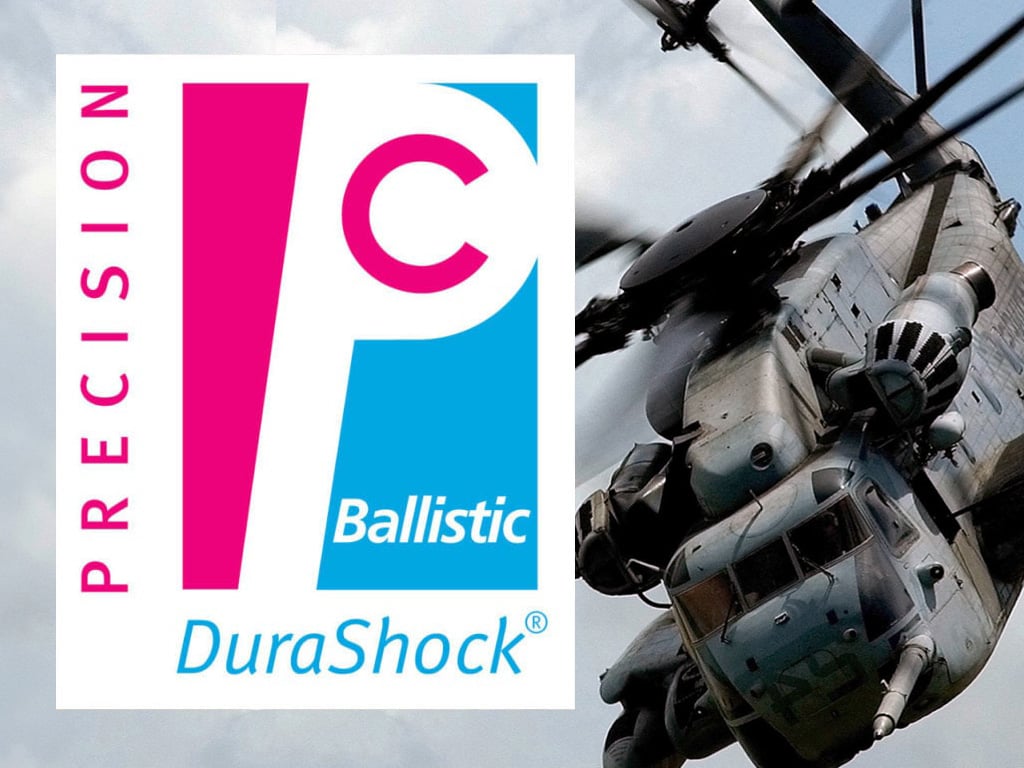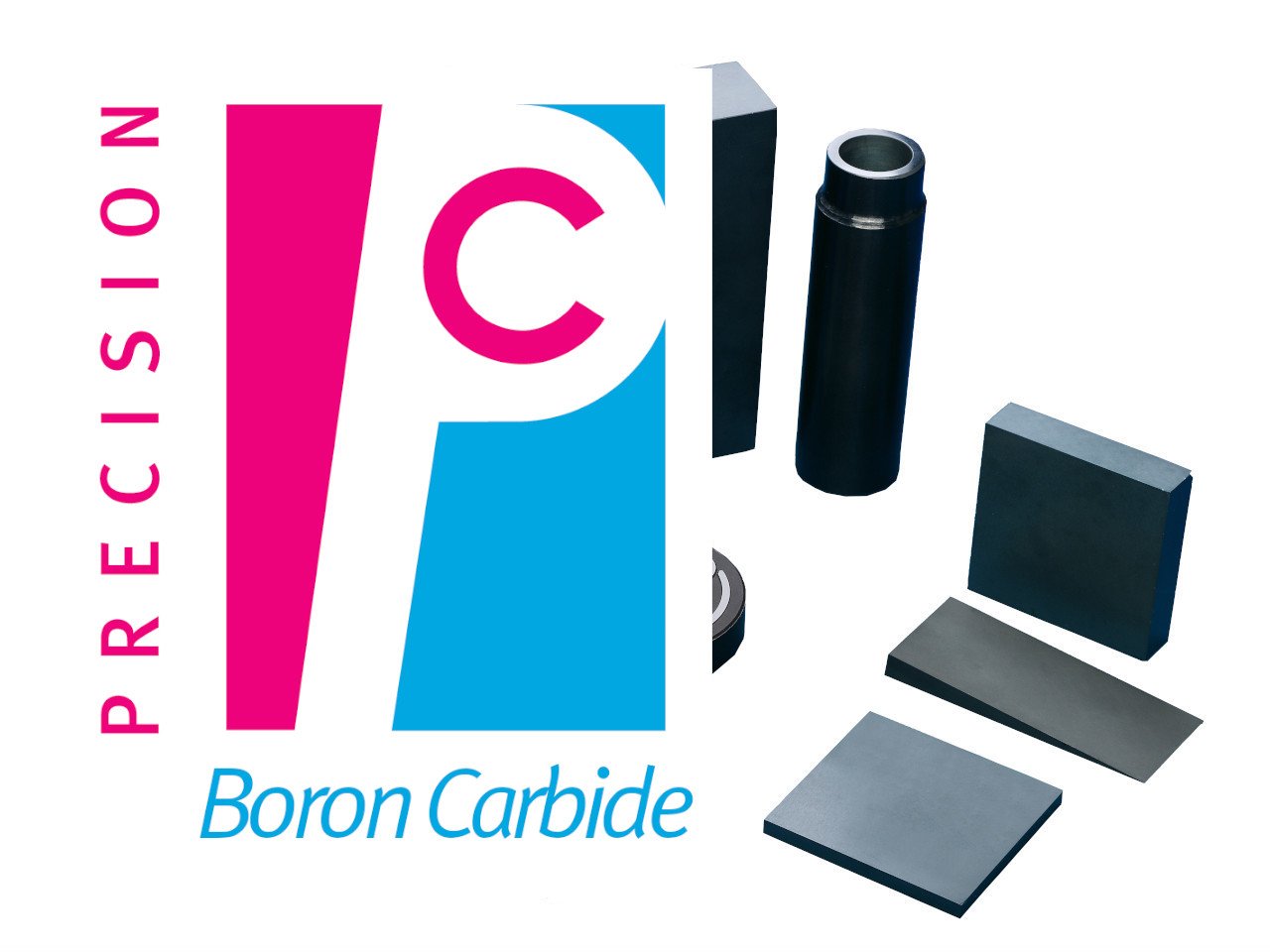DuraShock™ – SiC / B4C
Material Advantages
- Improved impact behavior
- Consistently performs above similar hybrids
- Lightweight alternative for ballistic protection applications vs. Silicon Carbide
- Unique microstructure with aggregated SiC, provides toughening by crack deflection
- Price competitive against traditional pure Boron Carbides
- High hardness, low density, high melting point, high elastic modulus, and chemical inertness
- High neutron absorption cross-section
- Excellent thermoelectric properties
- Consolidation by pressureless sintering – economical process
- Further densification possible without changing the material characteristics
- Complex shapes and access apertures are feasible, even in small batch quantities
Applications
- Bullet-resistant Armor Plates
- Body Armor
- Helicopter Panels
- Lightweight Vehicle Protection Panels
Material Properties
| Property | Unit | Silicon Carbide (SiC) | DuraShock (SiC+B4C) | Boron Carbide (B4C) |
|---|---|---|---|---|
| Density | g/cm3 | 3.1 | 2.8 | 2.52 |
| Hardness | GPa | 28 | 28 | 33 |
| Fracture Toughness KIC | MPa m2 | 4.6 | 4 | 2.5 |
| Compressive Strength | MPa | 2800 | 2500 | 3000 |
| Flexural Strength @ 25°C | MPa | 410 | 330 | 420 |
1 KIc Toughness as measured by the indentation method.
Disclaimer: The values presented are mean and typical of those resulted from test samples. They are provided as an indication only to serve as guidance in the design of ceramic components and are not guaranteed in any way. The actual values can vary according to the shape and size of the envisioned component.
DuraShock™ Under the Microscope
- Silicon Carbide aggregates – the key behind crack deflection and exceptional ballistic properties
- Superior performance vs. all other tested hybrids
- Only surpassed by hot pressed Boron Carbide
- Can potentially protect against WC cored threats
Datasheets

Boron Carbide / Silicon Carbide Composite
DuraShock
Frequently Asked Questions
-
Why is ceramic used in body armor?
The combination of low specific weight, high hardness, and reasonable toughness makes it a great material for body and vehicle armor. The weight reduction achieved with lightweight ceramics like DuraShock™ compared to steel or heavier ceramics is substantial and allows the vehicle to take on more cargo or ammunition. For these reasons, it is a popular alternative to steel armor and offers extra comfort and flexibility in body armor, allowing the wearer to move more freely.
-
What is DuraShock™ ceramic armor made of?
DuraShock™ is a Boron Carbide/Silicon Carbide ceramic composite, developed to give the very best combination of high ballistic performance with weight-saving considerations, while maintaining a reasonable cost. It’s a material developed and sold by Precision Ceramics.
-
What is the difference between DuraShock™ and other ceramic armor?
DuraShock™ is a ceramic ceramic composite between BoronCarbide and Silicon Carbide.
Both Boron Carbide and Silicon Carbide are excellent armour materials in their own rights , each with advantages and disadvantages. For example Boron Carbide is very light and provides a very good level of protection but its brittle and very expensive to manufacture. Silicon Carbide is more economical to produce but it’s heavier and its performance is less than that of Boron Carbide. DuraShock™ effectively combines the advantages of both while minimising the disadvantages. With DuraShock™ the performance is comparable to that of Boron Carbide for a price more indicative of Silicon Carbide.
-
Steel vs ceramic armor, what are the benefits?
There are differing factors when comparing steel and ceramic body armor. Below is a list of some of the benefits and draw backs of ceramic armor in comparison to steel:
BENEFITS
- Lightweight – ceramic plates weigh considerably less than steel and in some cases the weight can be halved
- Ceramic armor protects against high-caliber weapons whereas as steel is vulnerable (NIJ Lever 4 AP M2 or similar)
- Increased flexibility of ceramic armor which increases effectiveness in combat situations
- Ceramic armor is more stable than steel meaning its easy to store without worrying about armor degradation
- Steel armor tends to cause ricochet and is shrapnel prone both of which is not found with ceramic armor
DRAW BACKS
- In most cases after ceramic armor has suffered an impact it cannot be used again and is more brittle than steel
- Steel has a longer lifespan when compared to ceramic armor
- Steel armor is usually cheaper



